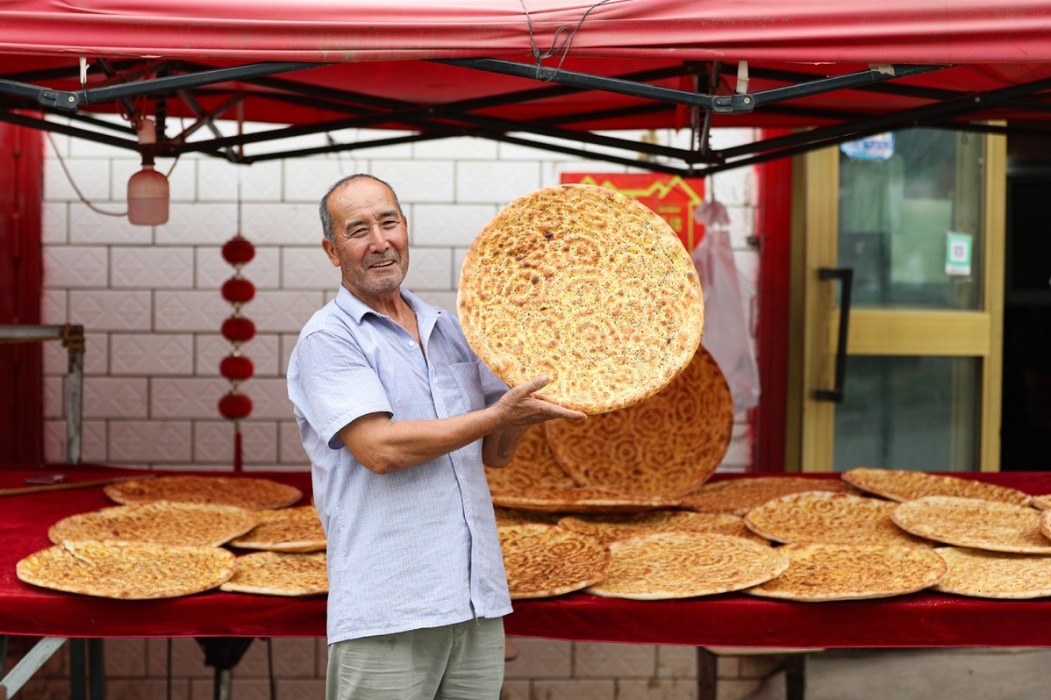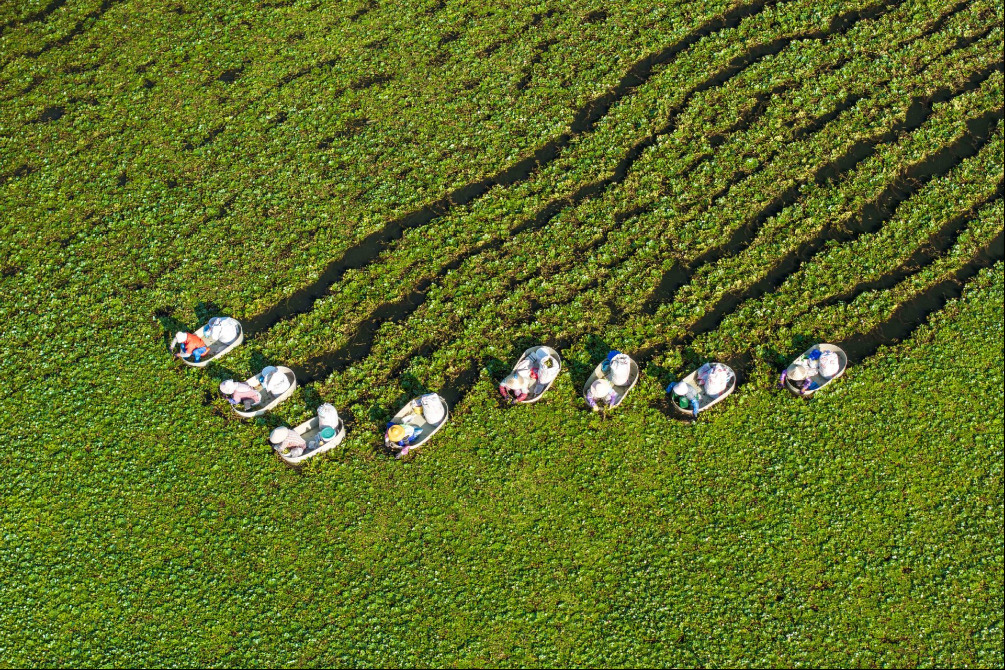Chinese scientists reveal light utilization mechanism of major seaweed species

BEIJING -- Chinese scientists have revealed for the first time the three-dimensional structure of the light energy utilization system of Coccolithophores, a famous photosynthetic organism, shedding light on designing new photosynthetic proteins to cope with climate change.
The research findings were published as the cover story in the journal Science on Friday.
Coccolithophores are one of the major marine phytoplankton. They are important contributors to the ocean's primary productivity, the process by which organisms convert inorganic substances into organic compounds, and play a significant role in marine carbon deposition and the global carbon cycle.
Coccolithophores can adapt to the variable light environment at different depths in seawater, and their efficient photoautotrophic growth enables them to reproduce rapidly. However, the mechanism of how their photosystem efficiently captures and utilizes light energy was unclear.
A team led by Wang Wenda and Tian Lijin from the Institute of Botany, Chinese Academy of Sciences, discovered the light-harvesting structure of this seaweed species. It consists of 38 light-harvesting antennas arranged into eight radial bands in a vortex pattern around the photosystem core, which greatly expands the light-harvesting area.
The team also identified abundant chlorophyll-c and fucoxanthin-type carotenoids in the light-harvesting antennas, which enable the antennas to efficiently absorb blue-green and green light with wavelengths between 460 and 540 nanometers in deep water.
In addition, the study found that a large amount of chlorophyll-c and chlorophyll-a form a flat and smooth energy transfer network, which may be the key to maintaining ultra-high quantum conversion efficiency.
Wang stated that the study offers a new structural model for understanding the efficient energy conversion mechanism of photosynthetic organisms.
"In the future, we expect to use the findings as a basis to design new photosynthetic proteins and further guide the artificial simulation and development of high carbon sink biological resources, which has great potential in the fields of synthetic biology and climate change response," he said.
- Chinese scientists reveal light utilization mechanism of major seaweed species
- Agricultural heritage conference opens in Hunan province
- China updates master plan for shelterbelt forest
- Chinese aircraft carrier's course 'in line with international law'
- China strengthens legal education with new legislation
- China's third aircraft carrier sails into South China Sea for tests





































